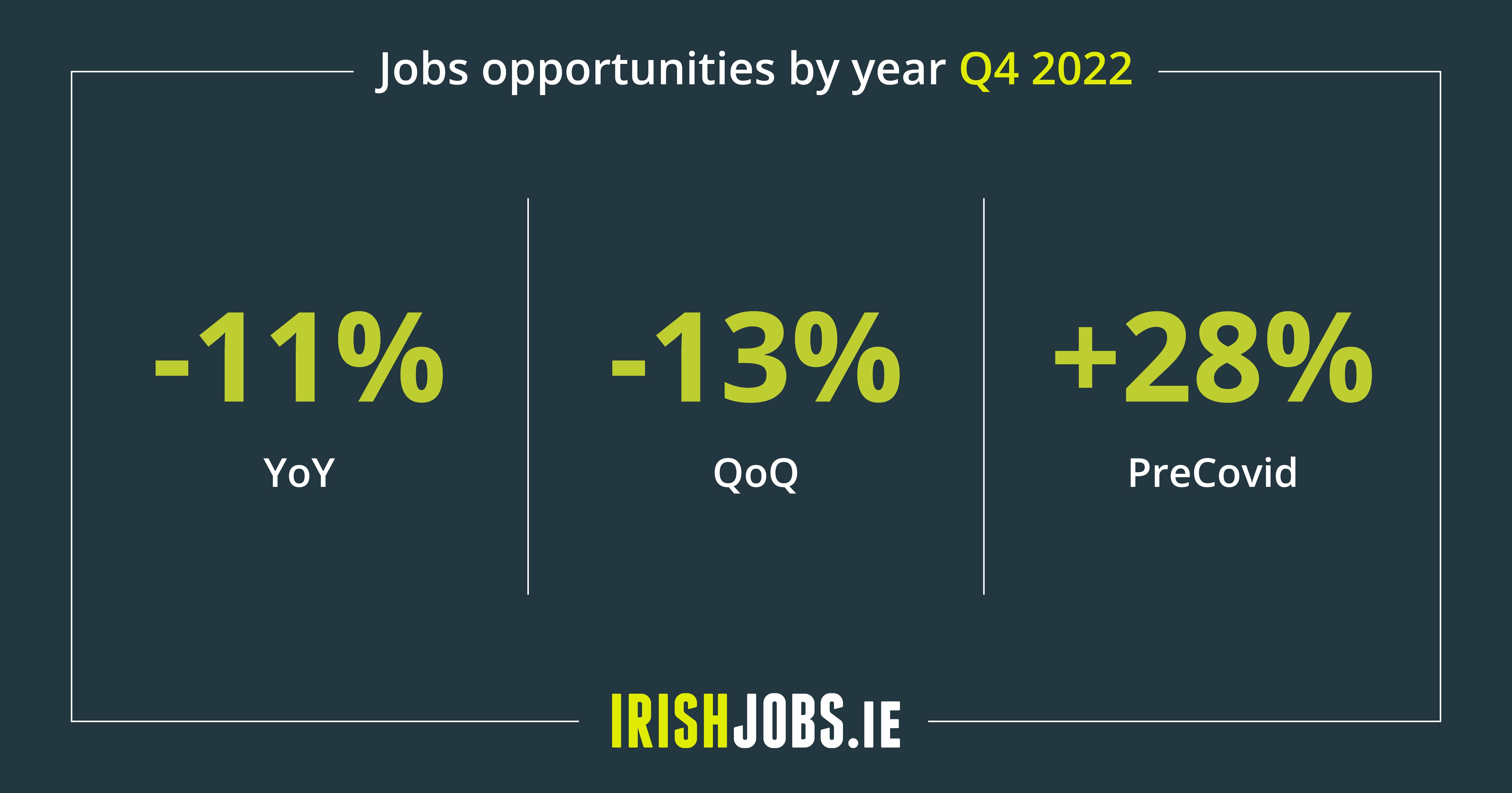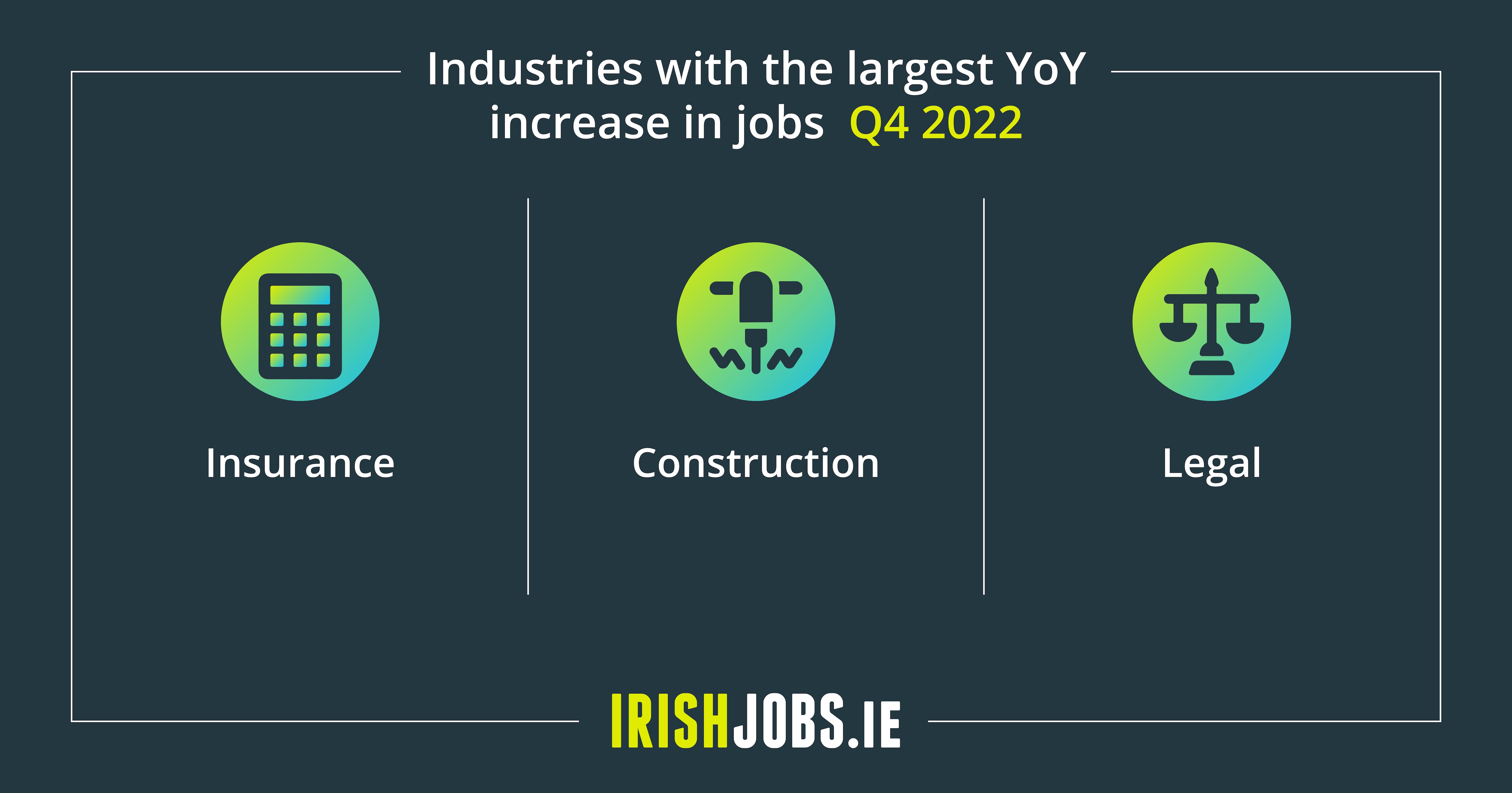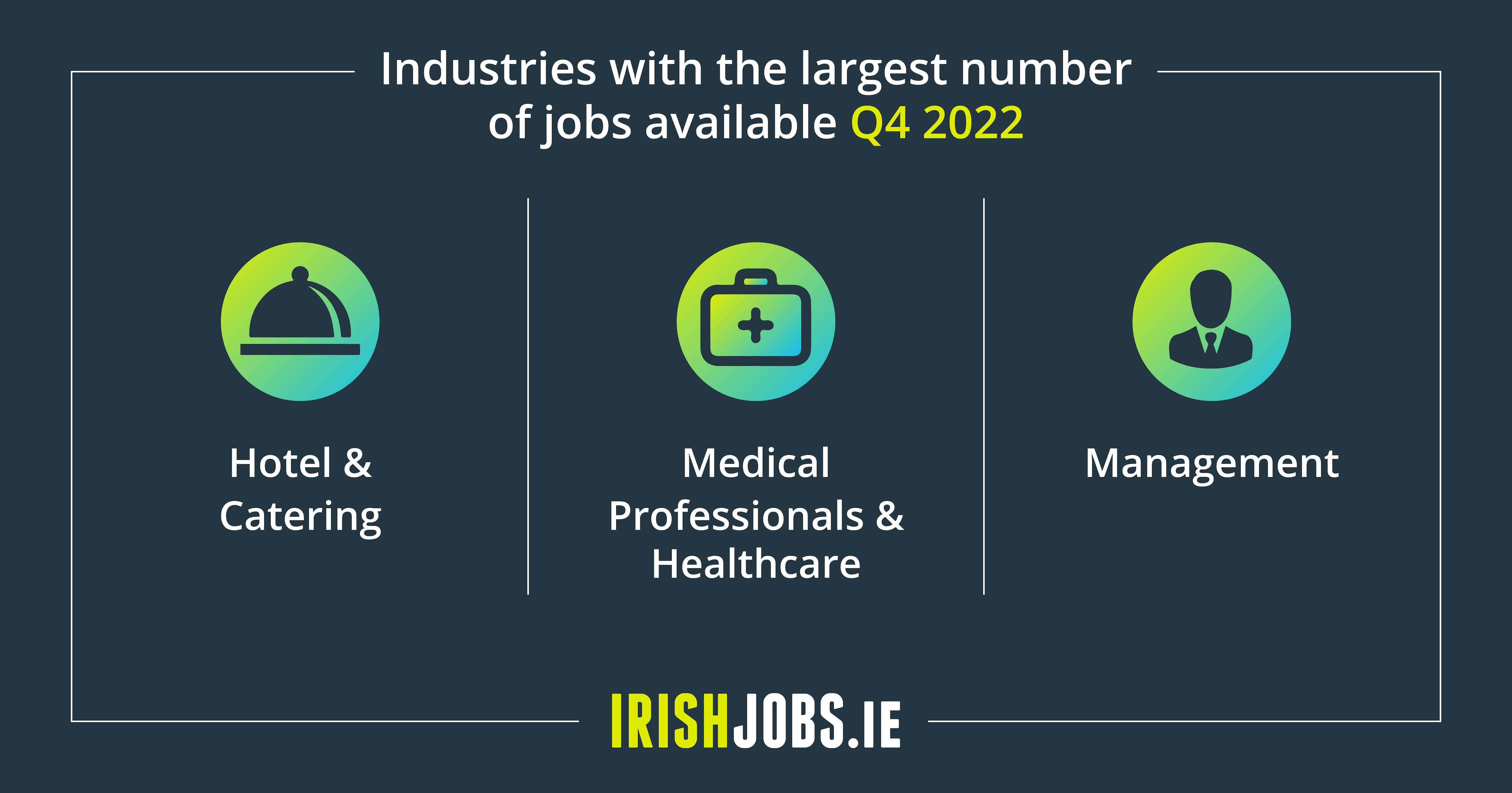
Leading hiring platform, IrishJobs has published the results of its latest quarterly Jobs Index, which reveals a strong but cooling jobs market as the number of vacancies eased on a yearly and quarterly basis.
Notwithstanding these yearly and quarterly declines, the volume of job vacancies generated in Q4 was still almost a third (28%) higher than pre-Covid levels, with a competitive recruitment landscape set to continue into 2023.
Following the job highs of last year, this latest Index continues the change of pace seen in Q3, with job vacancies in Q4 decreasing by 11% year-on-year (Y-o-Y) and -13% quarter-on-quarter (Q-o-Q).
Orla Moran, General Manager, IrishJobs.ie, says: “Ireland’s job market enters 2023 in a strong position with the number of job vacancies in Ireland overall almost a third higher than pre-pandemic levels. The adjustment in the market that we saw begin in Q3 continued into Q4. However, it’s worth pointing out that the final quarter of every year would traditionally be a time when recruitment activity eases back. The high number of jobs available combined with the current 20-year low in unemployment means the competitive recruitment landscape is set to continue in the year ahead.”
Industry Analysis

Of the 39 sectors analysed in this quarter’s Index, nine have posted year-on-year increases in job vacancy creation, while just five sectors have posted quarterly gains.
Security (+73% Y-o-Y), Customer Services (+18% Y-o-Y), Media (+7% Y-o-Y) and Health (+5% Y-o-Y) have increased or remained stable both in year-on-year and quarterly terms.
Meanwhile, five sectors have increased in annual terms but posted quarterly declines. These include Insurance, which saw a 55% increase year-on-year but a quarterly decline of 11%. Jobs in Construction were up by 10% year-on-year and down by 5% quarter-on-quarter, while Legal saw a year-on-year increase of 8% and a quarterly decrease of 6%.
The impact of recessionary fears and spiralling energy costs can be seen in sectors closely aligned with the domestic economy. These include Travel, which saw job vacancies fall by 42% Y-o-Y and 32% Q-o-Q. Arts and Entertainment vacancies were down by 36% Y-o-Y and 25% Q-o-Q. Meanwhile, Retail experienced a 32% fall Y-o-Y and a 14% fall Q-o-Q, while Catering was down by 28% yearly and quarterly.
Sectors with a strong multinational presence, such as Banking (-8% Y-o-Y; -10% Q-o-Q), Accountancy (-5% Y-o-Y; -18% Q-o-Q), Finance (-1% Y-o-Y; -20% Q-o-Q) Science (-4% Y-o-Y; -6% Q-o-Q) recorded minor falls, reflective of a cautious outlook rather than any retrenchment in recruitment.
Vacancy Generation

Overall, the Catering sector accounted for over 13% of job vacancies in Q4 2022. The Medical Professionals & Healthcare sector (11%) was the next largest generator of job vacancies, followed by the Management occupational group (8%). The IT sector accounted for 7% of job vacancies in fourth place.
Jobs By Location & Remote Work
With regards to jobs by location, 21 counties experienced both year-on-year and quarterly decreases in vacancies in Q4, while five counties experienced relatively modest increases. The largest gains were seen in Cork (+30% Y-o-Y; +10% Q-o-Q), Offaly (+19% Y-o-Y; +7% Q-o-Q) and Roscommon (+18% Y-o-Y; +7% Q-o-Q).
Meanwhile, Q4 was the second quarter in a row to see a fall in the number of working from home (fully remote) job vacancies. In Q4, working from home vacancies declined by 20% in Q4 after falling 7% in Q3. While remote working opportunities continue to be significantly higher than pre-Covid times, the trajectory for these roles appears downward as the remote working opportunities adjust to the evolving working environment.
Commentary
Orla Moran continues: “The data from this latest Index shows us that the demand for skilled and experienced staff is not likely to end any time soon. The ESRI is predicting that unemployment will remain under 5% for the next twelve months, and with such high levels of employment across all sectors, employers will need to look at their talent attraction strategies if they’re to entice people to change jobs against an uncertain economic outlook.
“In order to achieve this, employers will need to be flexible about meeting the demands of jobseekers. This includes understanding that salary is just part of an overall package that jobseekers are looking for. Other areas include the need for a dynamic company culture, flexible working environment and employee wellbeing offerings, on top of a seamless recruitment journey for the candidate. These will be key to helping employers to stand out in a highly competitive recruitment market. While some economic uncertainties will remain in the coming months, we do know that employers will need to move fast in this jobs market to secure the best people – a trend that is set to continue for the year ahead.”
